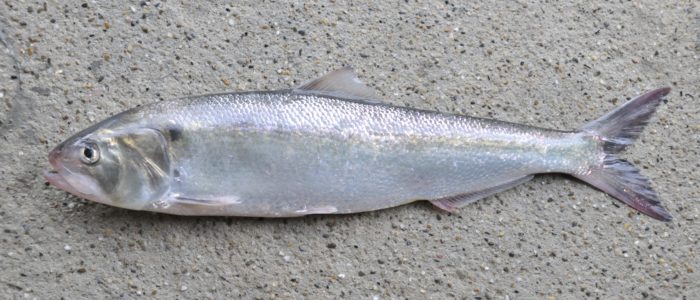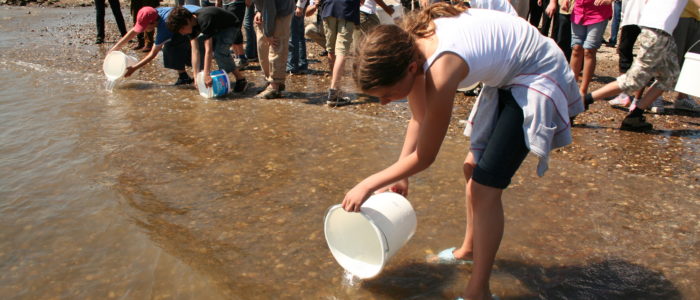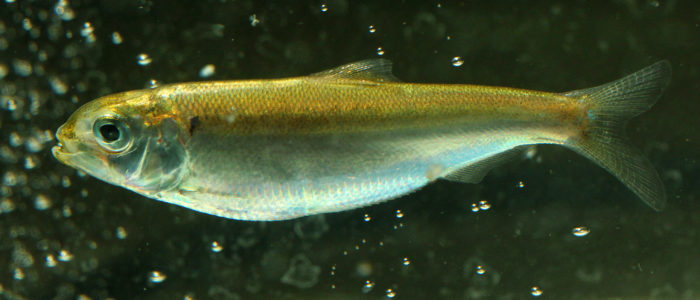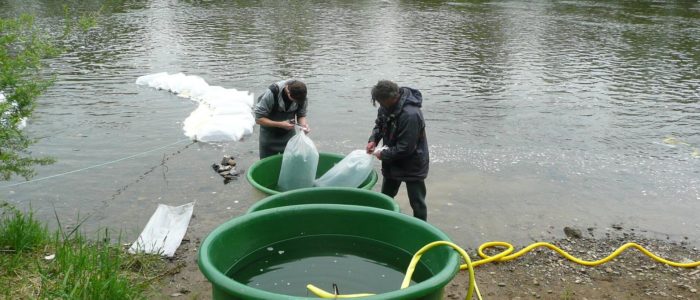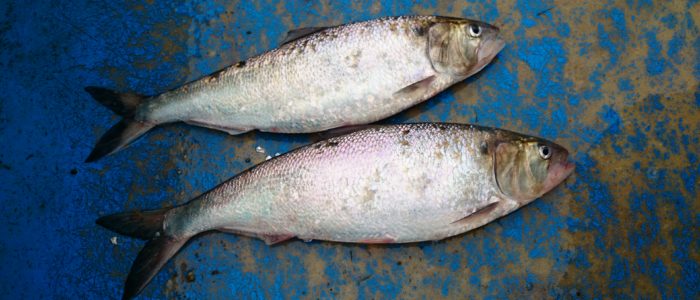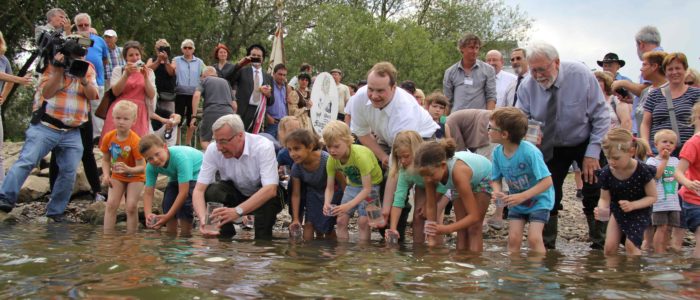The allis shad (Alosa alosa, Linné 1758) is an anadromous migratory fish from the herring family (Clupeidae). Its natural range stretches from Scandinavia in the north to Morocco in the south. The size of adult allis shad lies between 38 cm and 73 cm with a weight of 580 g to 4500 g, whereby the female allis shads become bigger and heavier, than the males. Likewise, size and weight increase from north to south. The allis shad spends the main part of its life in the sea. In an age of 3-8 years, allis shads reach the sexual maturity, females usually with 5-6 years, males with 3-5 years. In the spring, sexually mature fish ascend into middle and upper courses of larger rivers to spawn.

The spawning period extends from May to July. The allis shad gather at night from about 22:30 to 5:30 for spawning, which is accompanied by a characteristic splashing on the water surface (French “Bull”). The spawning activity depends on rising water temperatures and takes place in the range of 14-23°C (optimum 16-20°C). Allis shad prefer stable weather conditions without wind and rain as well as a stable discharge. They spawn preferentially above inflowing gravel banks with a water depth of 1-2 m and current velocities of 0.5-1 m/s. During the spawning period a single female releases several times between 60,000 and 235,000 eggs per kg body weight into the water. The fertilization of the eggs takes place in the pelagic, where eggs and sperm are released directly into the water column. Adult fish usually die after spawning. The larvae hatch, depending on the temperature, usually 4 to 5 days after fertilization with a size of 7 – 12 mm from the eggs. In the autumn of the same year, the 10-15 cm juvenile fish migrate to the estuaries, where they adapt to the increased salt content in brackish water for several weeks. In the winter, they then move further into the sea, where they grow up to until maturity and the life-cycle starts from scratch.
Historical stock situation
Up to the end of the 19th century, the allis shad was widespread and through its partly massive spawning ascent into the Western European Atlantic and North Sea tributaries, it attracted great economic interest on the part of inland fishing. By overfishing, water pollution and the construction of migration-obstacles, the allis shad stocks of Europe declined drastically since beginning of the 20th century. For this reason, allis shad have been included in Annexes II and V of the Flora-Fauna Habitats Directive of the European Union as a species of conservation concern.

Beside some smaller populations in Portugal, one finds the last important populations predominantly in the rivers at the west coast of France. However, the currently most important spawning population, the Gironde-Garonne-Dordogne population (France), has suffered a massive decline since 2003.
The allis shad also used to be abundant in the Rhine with its tributaries. In 1881, about 250,000 allis shad were caught during spawning in the Netherlands, while in 1910 there were only about 50,000 and in 1931 only 13. Despite isolated sightings of adult allis shad (strays), the allis shad has been considered extinct in the Rhine system since the 1960s.
Reintroduction and current population
In 2008, the reintroduction of allis shad in the Rhine system was started (EU-Life/EU-Life+ project) and is now continued within the framework of the “transnational allis shad project”. Within the framework of these projects, a total of almost 13 million allis shad larvae were stocked between 2008 and 2018. The larvae come from a French farm, where wild parents from the Gironde-Garonne-Dordogne system are used for breeding.
In July 2013, for the first time in 60 years, an allis shad ascending into the Moselle was registered at the automatic fish counter of the Moselle in Koblenz, Rhineland-Palatinate. In addition, three juvenile allis shad were caught in the Philippsburg power plant in 2013 and one adult in Wörth in Rhineland-Palatinate. In the following year, 341 adult allis shad were registered in the Rhine system. Evidence from around 80 juvenile fish in the Philippsburg nuclear power plant showed that the allis shad had spawned successfully. Since then, a total of 745 adult allis shad have been registered throughout the Rhine system. In addition to the mainstream, there is evidence in Lippe, Main, Mosel, Neckar, Nidda, Sieg and Ijsselmeer. Regular evidence of juvenile fish from natural reproduction shows that natural stock development has already begun and that a significant proportion of the juvenile fish stock (in addition to the continued stocking measures) is recruited from the natural reproduction of the returnees.
